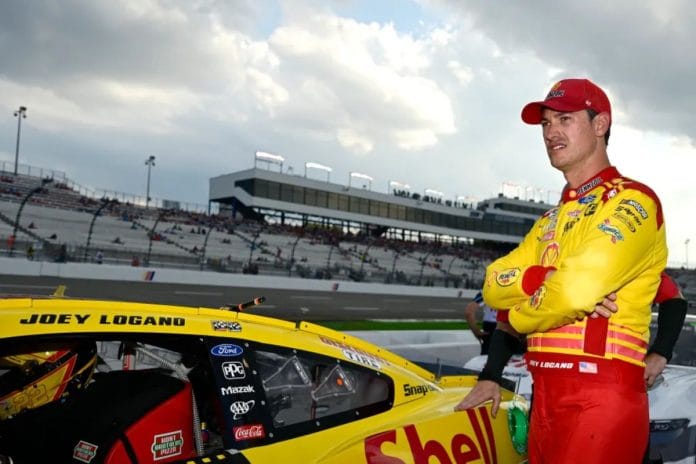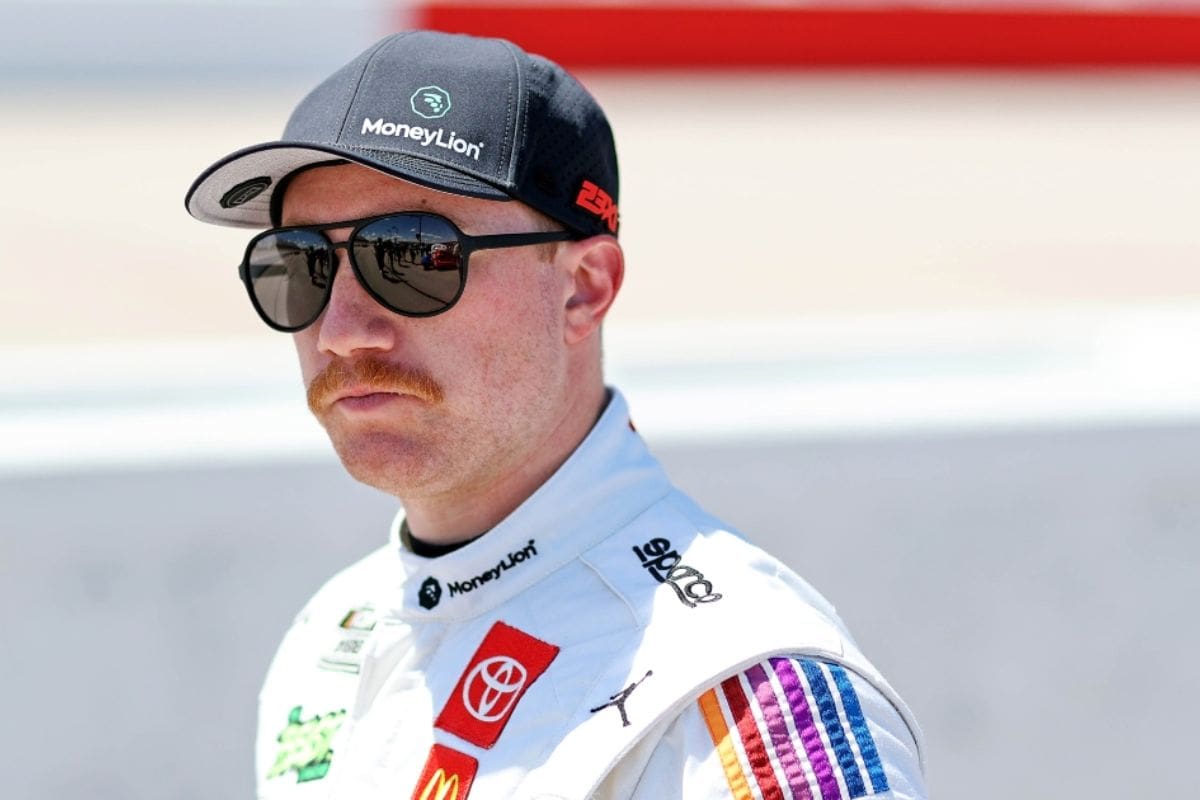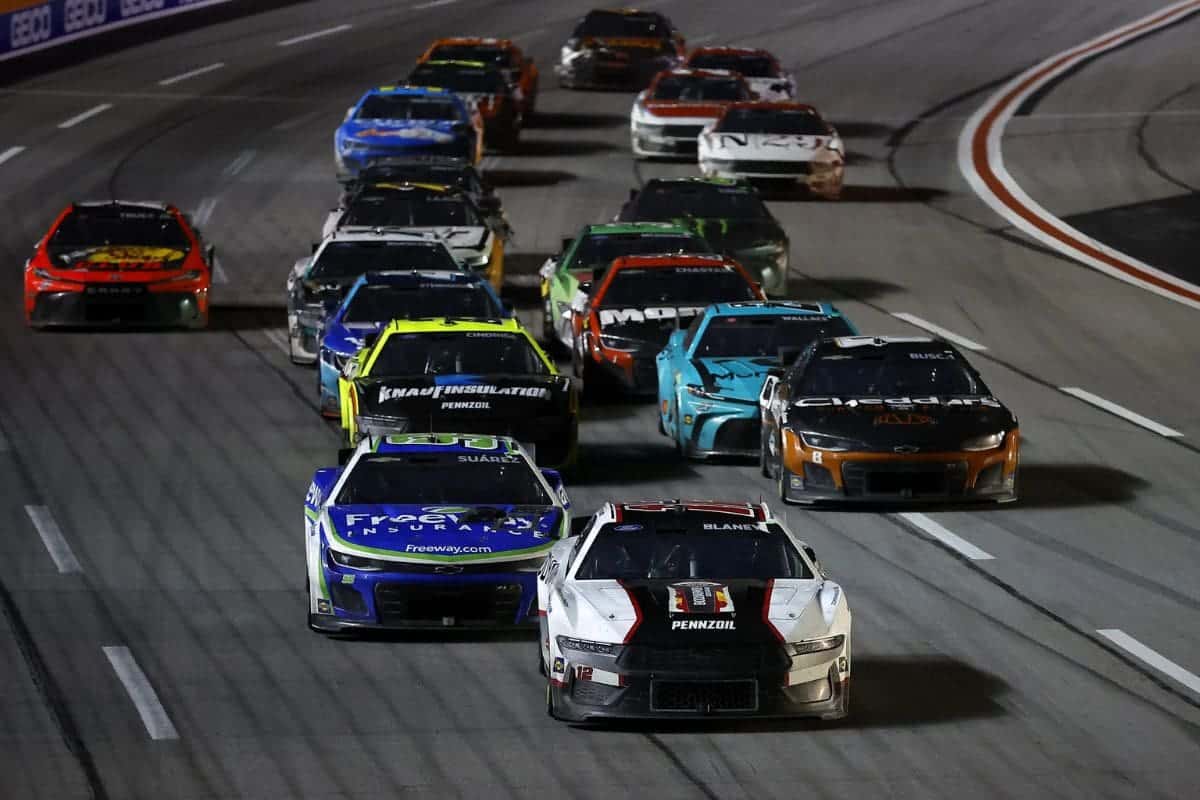Joey Logano Slams NASCAR’s Bulldozer Cars: Joey Logano‘s recent critique of NASCAR’s so-called “bulldozer” cars raises pertinent questions about the current state of respect within the Cup Series. His assertion that these vehicles build a culture of aggressive, reckless driving suggests a fundamental shift in racing dynamics, where skill is increasingly overshadowed by brute force. As drivers adapt to the capabilities of the Next Gen car, the implications for sportsmanship and fellowship among competitors warrant further examination. What are the potential consequences of this aggressive shift on the future of the sport?
Key Highlights
- Joey Logano criticizes NASCAR’s Next Gen cars as “bulldozers,” promoting aggressive racing over skillful driving and finesse.
- Drivers express concerns about a lack of respect on the track, highlighting a culture of aggression in recent races.
- The robust design of the Next Gen car encourages reckless tactics, blurring the line between hard racing and taking out competitors.
- Calls for redesigning cars aim to restore balance, enhance racing dynamics, and prioritize driver safety and respect among competitors.
- Rising fan concerns about aggressive driving threaten NASCAR’s reputation, emphasizing the need for a balance between excitement and respect in racing.
Tyler Reddick’s Disappointment and Dale Earnhardt Jr.’s Concern
As NASCAR continues to evolve, the recent race at Watkins Glen has prompted considerable concern among drivers regarding the aggressive tactics employed on the track. Tyler Reddick‘s disappointment highlights a growing discontent over the increasing normalization of using bumpers and leaning on fellow competitors as a means of progression. This behavior raises critical questions about the integrity of competition and the fundamental tenets of respect that have historically governed the sport.
Reddick’s frustration is not an isolated sentiment; it reflects a broader unease within the driver community. The tactics observed at Watkins Glen, characterized by overt aggression, threaten to erode the friendship and mutual respect that are crucial for the sport’s long-term health. When drivers resort to such actions, they risk not only their own safety but also that of their peers, paving the way for a culture where contact is expected rather than avoided.
“I’m only concerned about is that we’ve seen a lack of respect.”-(dale jr.)
Dale Earnhardt Jr. further amplified this discourse by emphasizing the alarming lack of respect among drivers. His concerns resonate with those of many veteran competitors who fear that the spirit of fair competition is being compromised.
As this aggressive trend persists, it becomes increasingly important for NASCAR to address these behaviors. By building a culture of respect and accountability, the organization can guarantee that the excitement of racing does not come at the cost of sportsmanship and safety.
The ongoing conversation among drivers signifies a crucial moment, one that could redefine the ethos of NASCAR racing for years to come.
Rise of Excessive Beating and Banging
The rise of excessive beating and banging in NASCAR has become a focal point of concern among drivers and fans likewise. This abrasive style of racing, often seen as a byproduct of the new Next Gen car, has elicited mixed reactions within the motorsport community. While some accept the aggressive tactics, others, like Joey Logano, question the long-term implications for respect and competition in the series.
Several factors contribute to this trend:
- Enhanced Durability: The Next Gen car’s design allows for fewer repercussions from physical contact, emboldening drivers to engage in more aggressive tactics without fear of considerable damage.
- Competitive Stress: As the stakes rise, drivers feel compelled to push boundaries in order to secure wins. The intense focus on performance often translates to a willingness to prioritize results over sportsmanship.
- Fan Expectations: Audiences have been increasingly drawn to the excitement generated by close-quarters racing. This has led to a culture where aggressive driving is not only tolerated but celebrated, further incentivizing drivers to adopt a “win at all costs” mentality.
As the sport evolves, it becomes vital for stakeholders to address these dynamics.
Without a concerted effort to instill respect and accountability among drivers, the essence of NASCAR could be overshadowed by a culture of recklessness, ultimately diminishing the integrity of the competition.
Joey Logano Highlights Flaws in the Next Gen Car
NASCAR’s ongoing evolution, particularly with the introduction of the Next Gen car, has sparked intense debate about its design and impact on racing dynamics. At the heart of this discussion is the shift from traditional steel panels to carbon fiber components, which was intended to improve safety and promote parity among competitors.
However, as Joey Logano astutely points out, this change has inadvertently fostered a culture of aggression on the racetrack. The Next Gen car’s robust construction allows it to absorb notable impacts, leading drivers to exploit this characteristic.
“The car accepts so much contact. like leaning on each other is something that is just part of the game. And when you’re going down into Turn 1 and you have cars that are tougher now. The bumpers are stronger than they were.”-(logano)
View this post on Instagram
This shift raises concerns about the essence of competition and respect among drivers, as the ability to withstand contact may encourage more reckless behavior. While the intention behind the Next Gen car was to create a level playing field, the reality appears to diverge from this ideal.
The improved durability of the bumpers and bodywork not only alters the dynamics of racing but also raises questions about the long-term implications for driver safety and the sanctity of racing etiquette. As drivers adapt to these changes, the challenge remains for NASCAR to balance innovation with tradition, ensuring that the sport’s competitive spirit is not overshadowed by a more combative approach.
The Impact of the Next Gen Car on Racing Tactics
A considerable shift in racing tactics has emerged with the introduction of the Next Gen car, fundamentally altering how drivers approach competition on the track. The cars, likened to “bulldozers” with their robust bumpers, encourage aggressive driving strategies that often prioritize position over skillful racing. This paradigm shift raises critical questions about the balance between competitive aggression and the integrity of racing itself.
“Now the bumpers are bulldozers, right? When you go to your local little go-kart track and they got the big bumpers all the way around it, what ends up happening? You guys clobber each other, we have cars like that now; we have cars that are just tough,”-(joey)
The implications of this evolution can be dissected into three key areas:
- Aggressive Navigation: With improved durability, drivers feel emboldened to engage in more reckless tactics, believing they can withstand the consequences of contact without considerable damage. This fosters a culture where bumping and blocking become commonplace.
- Strategic Calculations: As seen in Austin Dillon’s incident, the fine line between hard racing and taking out competitors has blurred. Drivers may now weigh the risks of aggressive moves differently, often opting for a “send it” mentality that prioritizes immediate gains over long-term consequences.
- Entertainment vs. Respect: While the increased rivalry can heighten fan engagement, it also risks fostering a lack of respect among competitors. Dale Earnhardt Jr. has pointed out that unchecked aggression could lead to detrimental outcomes, undermining the sport’s foundational principles of fairness and skill.
Drivers Adapting to the Next Gen Car
While drivers have historically adapted to evolving technology, the shift to the Next Gen car has demanded a unique recalibration of skills and strategies. This new vehicle has brought forth considerable challenges, particularly clear on short ovals and road courses, where passing opportunities have diminished. As drivers contend with these limitations, they are forced to navigate a landscape where speed and agility are often sacrificed for stability.
Furthermore, the trend of fuel saving at drafting and superspeedways has introduced another layer of complexity. The current configuration, characterized by lower horsepower, has left drivers feeling constrained, as they endeavor to make the most of the tools provided to them. With NASCAR’s hesitance to increase horsepower, competitors are left to navigate through a set of rules that seem to restrict rather than empower them.
“Good, bad, or any different, it’s up to everyone else to decide, but the cars accept it, and so the drivers take it. You’re gonna take what’s there, and when it comes down to those heavy breaking zones, the late race restarts when you’re barreling down the turn 1 three four wide, everyone’s leaning on each other. It’s just what it is these days.”- (Logano)
Joey Logano’s observations highlight a broader sentiment within the driver community. The necessity to adapt to aggressive racing tactics during late-race restarts and heavy braking zones present a shift in racing dynamics. As he notes, drivers are simply working with the conditions presented to them, often relying on physical contact as a means of gaining position in a highly competitive environment.
In this context, the question arises: does NASCAR need to rethink the Next Gen car’s design to restore a sense of driver agency? The ongoing debate emphasizes the need for balance between technology and the art of racing, ultimately determining the future path of the sport.
News in Brief: Joey Logano Slams NASCAR’s Bulldozer Cars
The critiques voiced by Joey Logano regarding the Next Gen cars illuminate a critical discourse surrounding driver conduct and vehicle design in NASCAR. As aggressive racing increasingly overshadows skillful driving, a reevaluation of the current vehicle specifications becomes imperative. Restoring respect and sportsmanship among competitors necessitates addressing the durability and adaptability of these cars. Ultimately, a balance between competitive edge and driver integrity must be established to foster a healthier racing environment in the Cup Series.
ALSO READ: Joey Logano Hails Goodyear Tires as Game-Changer: “A Huge Win for the Sport”





